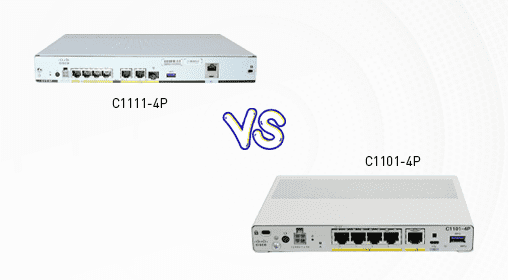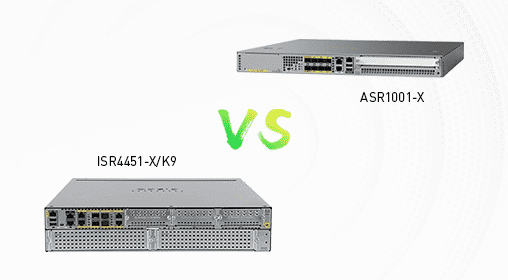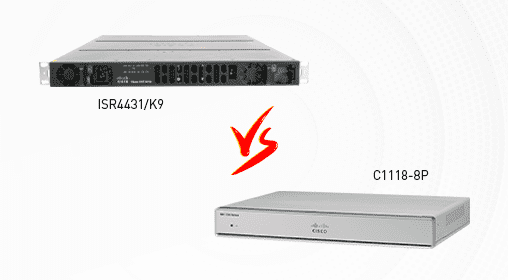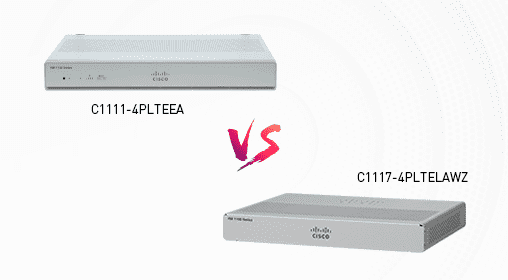














The Compact Powerhouses: Unpacking Cisco's C1111-4P and C1101-4P Routers
Choosing the right piece of networking gear for a business, especially a compact router, feels a lot like picking a reliable daily driver. It's not about the flashiest specs; it's about consistent performance, durability, and getting the job done without a fuss. Today, we're putting two of Cisco's popular compact routers side-by-side: the C1111-4P and the C1101-4P. Both belong to the esteemed 1100 series of Integrated Services Routers (ISR), designed to bring enterprise-grade features into a smaller footprint. But beneath that similar exterior, they cater to slightly different needs. Let's dive into what sets them apart.
At their core, both routers share a common lineage. They are built for highly secure wide area networking and pack enterprise-level security features right out of the box. They support flexible deployments and are your gateways to modern networking architectures like Cisco's SD-WAN, which allows for easier management and better application performance. However, the devil is in the details, and that's where the C1111-4P starts to pull ahead for more demanding setups.
A Look Under the Hood: Core Parameters
The most significant differences emerge when you compare their core hardware capabilities. The C1111-4P is generally equipped with more robust foundational resources, which directly impacts its ability to handle heavier workloads and more advanced services. The following table breaks down the key specifications.
|
Feature |
C1111-4P |
C1101-4P |
|---|---|---|
|
Fixed DRAM |
8GB (typical for advanced SD-WAN security)
|
4GB
|
|
Fixed Flash |
Information Varies |
4GB
|
|
PoE (Power over Ethernet) Support |
Available on specific models (e.g., 4/8 PoE or 2/4 PoE+ ports on certain platforms)
|
Not Available
|
|
Built-in GE Ports |
Up to 10 x 10/100/1000 (configurable as WAN/LAN)
|
1 WAN + 4 LAN
|
|
WAN Flexibility |
Dual GE WAN ports; optional PoE upgrade; fiber/SFP support on some models
|
1 GE WAN port
|
This table tells a clear story. The C1111-4P's potential for 8GB of memory makes it a stronger candidate for environments where you plan to enable advanced security features and SD-WAN policies without bogging down the system. Furthermore, the availability of Power over Ethernet is a game-changer for many small businesses. Imagine being able to power your wireless access points or IP phones directly from the router, eliminating the need for separate power adapters and simplifying cabling. This is a capability the C1101-4P simply doesn't have.
Design and Physical Footprint
Both routers sport a compact and robust design, ideal for space-constrained environments like small offices or branch locations. They are built to be tough. While specific military-grade certifications for these exact models aren't listed in the search results, Cisco's ISR series is known for its durability, often designed to withstand variable operating conditions. The physical layout of ports is straightforward, but the C1111-4P often offers more connectivity options straight out of the box, including those versatile ports that can support SFP modules for fiber connections, giving you more flexibility in how you connect to your internet service provider.
Functionality and Real-World Performance
This is where the spec sheet translates into daily use. The C1111-4P, with its resource advantage, is better positioned to handle multiple simultaneous tasks—think running a full suite of security inspections, application optimization, and VPN tunnels without breaking a sweat. Its dual WAN capability means you can set up a reliable backup internet connection or load-balance traffic between two providers, a crucial feature for business continuity.
The C1101-4P, on the other hand, is a solid, no-frills workhorse. Its four LAN and one WAN port configuration is perfect for a very straightforward setup: a single internet connection supporting a handful of wired devices. It covers the basics exceptionally well, providing secure and reliable connectivity for a small team. However, the lack of PoE and the single WAN port are its primary limitations, anchoring it to simpler network designs.
User Experience and Long-Term Value
For the user, the experience differs mainly in scalability and convenience. Setting up either router is streamlined by Cisco's solutions like zero-touch configuration, which allows for quick deployment. But down the line, a C1111-4P user has more room to grow. The ability to add PoE devices or leverage a faster secondary internet connection provides peace of mind and avoids the need for a premature upgrade.
When discussing value, it's not just about the initial price. The C1101-4P represents an excellent entry point into the Cisco ecosystem for cost-conscious deployments with fixed, simple needs. It's a solid investment for stability. The C1111-4P, while likely requiring a higher initial investment, offers greater long-term value through its expanded feature set and flexibility. It's an investment that grows with your business, potentially saving you from having to add external PoE switches or a separate device for a redundant internet connection.
The Verdict
So, which one is for you? It boils down to your roadmap.
The Cisco C1101-4P is your go-to for a simple, reliable, and cost-effective wired networking foundation for a very small office where advanced features like PoE and dual WAN are not on the horizon. It does its job and does it well.
The Cisco C1111-4P is the clear choice if you anticipate any form of growth or have immediate needs for Power over Ethernet, link redundancy, or more advanced networking services. Its superior hardware foundation and flexible port options make it a more versatile and future-ready platform.
Both routers deliver on the Cisco promise of security and reliability. Your choice simply depends on how much of that power you need today, and how much you might need tomorrow.



